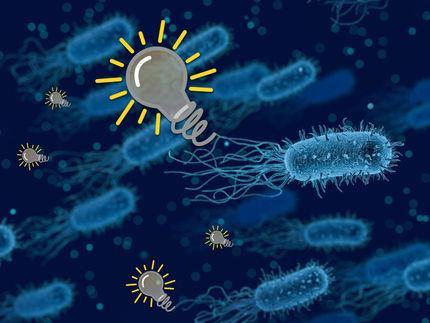Animation demystifies complex science and brings nanotechnology to life
Just as artists at Disney and Pixar Animation Studios bring Mickey Mouse, Shrek and Nemo to life, life science artists are using animation to bring viruses, bacteria and even nanowires to life and demystify scientific concepts.
Life science animators from Purdue Research Park-based Seyet LLC recently used their video talents to demonstrate how silicon nanowires form, a process that may change the way computers and consumer electronics are manufactured. Seyet's video provides people who don't have a medical or scientific background a "visual story" of how such complicated organisms or human-designed technologies operate.
"Scientific research is becoming increasingly complex, At the same time, it is important that researchers clearly communicate new discoveries to the public," said Jon Kevan, director of research and design for Seyet LLC, a visual communication company. "The animation of the nanowires demonstrates how a silicon nanowire can 'nucleate,' or begin to form on the way to becoming wires."
Seyet specializes in translating difficult-to-grasp scientific concepts and processes into the highly accurate animated forms now demanded by specialized scientific- and technology-focused audiences, as well as regulatory agencies.
A recent video animation was designed for a research discovery by Eric Stach, a Purdue University assistant professor of materials engineering. The video describes his work with a transmission electron microscope, which shows how nanowires develop. The research is based at IBM's Thomas J. Watson Research Center in Yorktown Heights, N.Y., and at Purdue's Birck Nanotechnology Center in the university's Discovery Park.
Stach published a paper on his research that appeared in the journal Science. It is the first time researchers have made such precise measurements of the nucleation process in nanowires, Stach said.
"This is very complicated science, and showing people how it works is a tremendous help in understanding it," Kevan said. "The demand for new discoveries like Eric Stach's is great, as is the need to explain, in a non-scientific way, their meaning to the public."
Most read news
Topics
Organizations
Other news from the department science

Get the chemical industry in your inbox
By submitting this form you agree that LUMITOS AG will send you the newsletter(s) selected above by email. Your data will not be passed on to third parties. Your data will be stored and processed in accordance with our data protection regulations. LUMITOS may contact you by email for the purpose of advertising or market and opinion surveys. You can revoke your consent at any time without giving reasons to LUMITOS AG, Ernst-Augustin-Str. 2, 12489 Berlin, Germany or by e-mail at revoke@lumitos.com with effect for the future. In addition, each email contains a link to unsubscribe from the corresponding newsletter.




























































